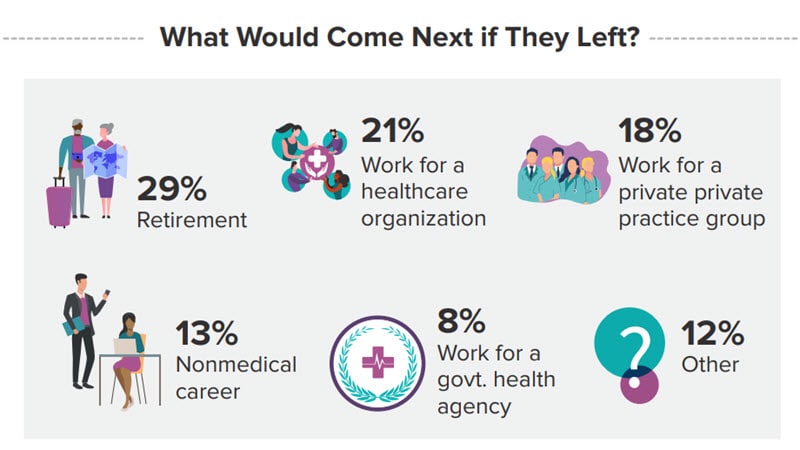Realities of Working as an Employed Physician: Pros and Cons
Core Concepts
Employed physicians face pros and cons in their career choice, including high satisfaction with predictable salaries but potential lack of employer recognition.
Abstract
This content discusses the pros and cons of doctors working for healthcare organizations or hospitals. It highlights the satisfaction derived from predictable salaries but also points out the potential lack of employer recognition for their contributions. The infographic delves into the realities of being an employed physician, focusing on meeting productivity targets and performance metrics. For more in-depth information, the Medscape Employed Physicians Report 2023 is recommended.
Key Highlights:
Pros and cons of working as an employed physician
High satisfaction with predictable salaries
Potential lack of employer recognition for contributions
Focus on meeting productivity targets and performance metrics
Infographic: Realities of Working as an Employed Physician
Stats
Satisfaction with predictable salary is high
Employer recognition of input and contributions may be lacking
Quotes
"Satisfaction with their predictable salary is high, but so is employer recognition of their input and contributions - and that doesn't always happen."
Key Insights Distilled From
by Jon Mckenna at www.medscape.com 08-29-2023
https://www.medscape.com/viewarticle/995684
Deeper Inquiries
How do the pros and cons of working as an employed physician compare to those in private practice?
In comparing the pros and cons of working as an employed physician versus those in private practice, there are several key differences to consider.
Pros of working as an employed physician:
Predictable salary: Employed physicians typically receive a stable income, which can provide financial security.
Access to resources: Healthcare organizations often provide access to advanced technology, support staff, and facilities that may not be readily available in private practice.
Work-life balance: Employed physicians may have more structured work hours and less administrative burden, allowing for a better work-life balance.
Cons of working as an employed physician:
Limited autonomy: Employed physicians may have less control over decision-making processes compared to those in private practice.
Lack of flexibility: Healthcare organizations may have strict policies and procedures that limit the flexibility of employed physicians.
Employer recognition: Recognition of input and contributions may not always be as prominent in an employed setting compared to private practice.
How can healthcare organizations implement to improve employer recognition for employed physicians?
Healthcare organizations can implement several strategies to improve employer recognition for employed physicians, fostering a more positive work environment and enhancing job satisfaction.
Strategies to improve employer recognition:
Acknowledge contributions: Healthcare organizations should actively recognize and appreciate the efforts and contributions of employed physicians through regular feedback and acknowledgment.
Provide opportunities for growth: Offering professional development opportunities, mentorship programs, and career advancement paths can demonstrate a commitment to the growth and success of employed physicians.
Foster a culture of appreciation: Creating a culture of appreciation and recognition within the organization can boost morale and motivation among employed physicians.
How can the satisfaction levels of employed physicians be further enhanced beyond predictable salaries?
To enhance the satisfaction levels of employed physicians beyond predictable salaries, healthcare organizations can implement various initiatives and practices that focus on overall well-being and job fulfillment.
Strategies to enhance satisfaction levels:
Promote work-life balance: Offering flexible work schedules, telecommuting options, and wellness programs can help employed physicians achieve a better work-life balance.
Encourage autonomy and decision-making: Providing opportunities for employed physicians to have input in decision-making processes and patient care can increase job satisfaction.
Support professional development: Investing in continuing education, training programs, and skill development opportunities can enhance the satisfaction levels of employed physicians by promoting growth and advancement.
0
More on Healthcare
